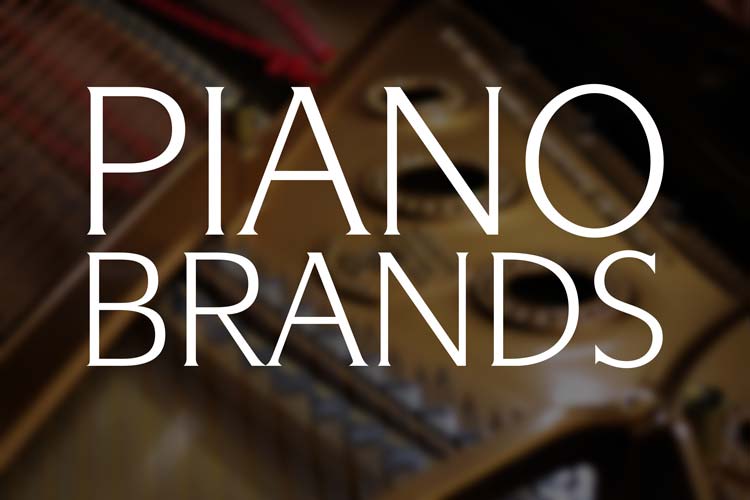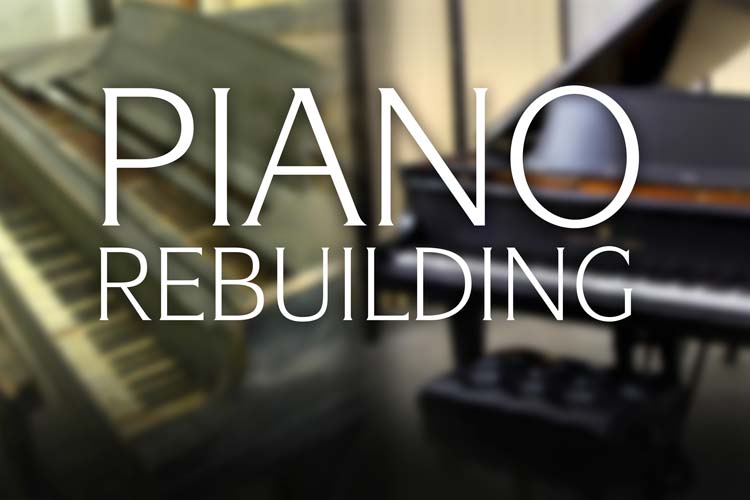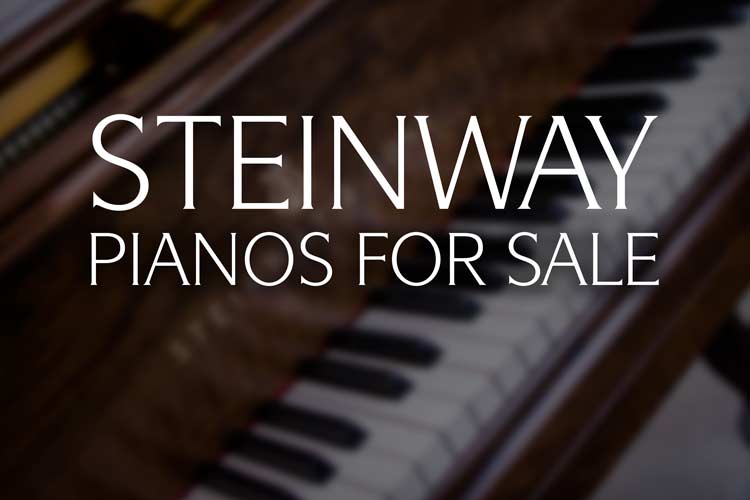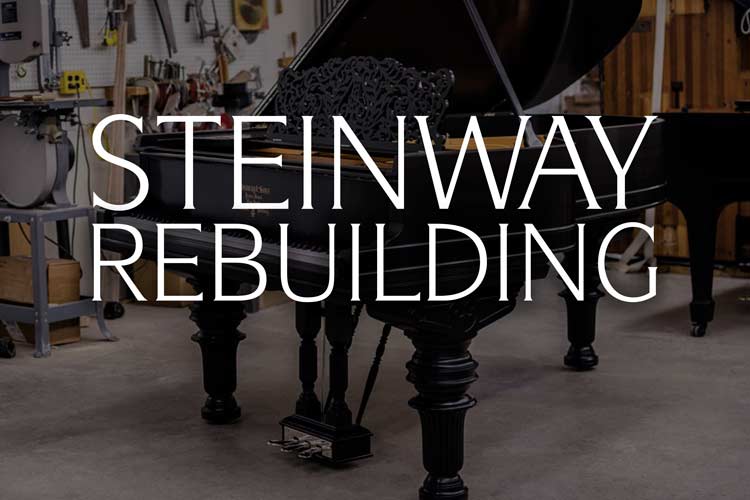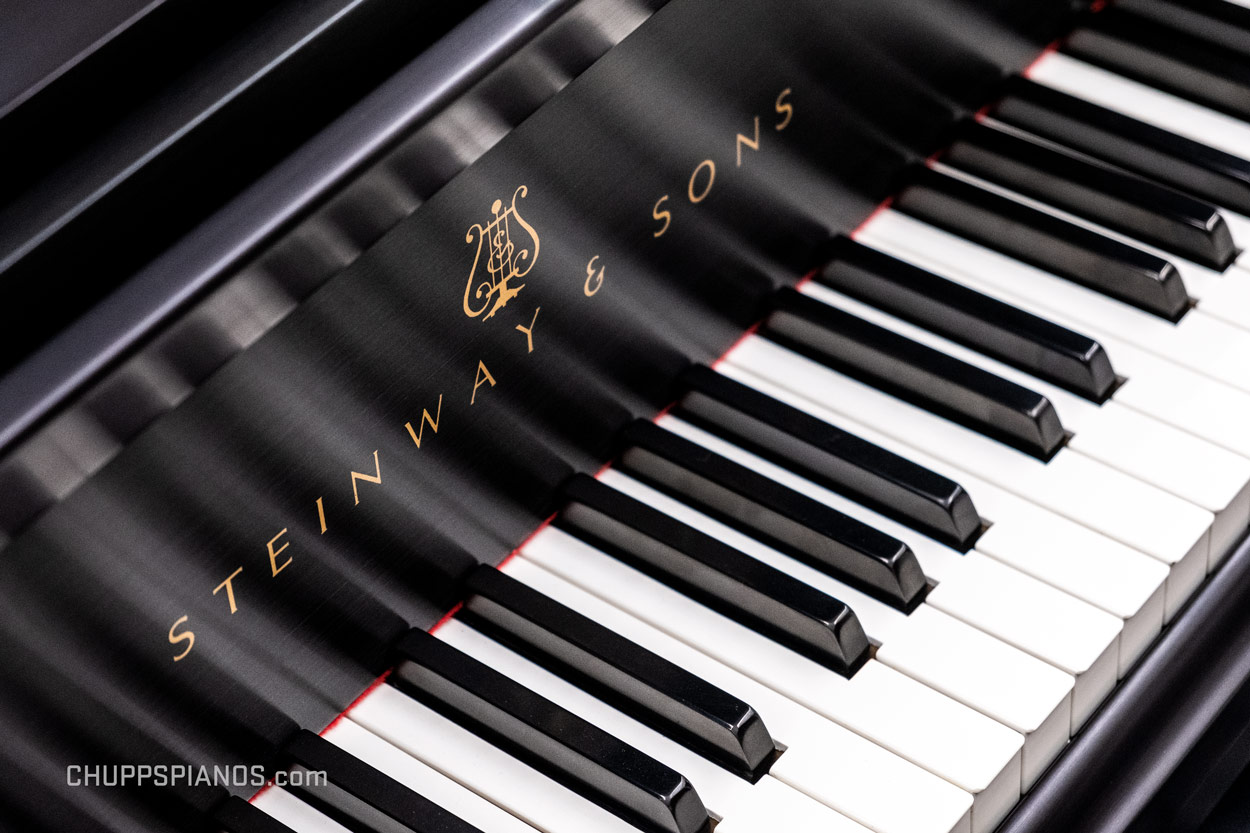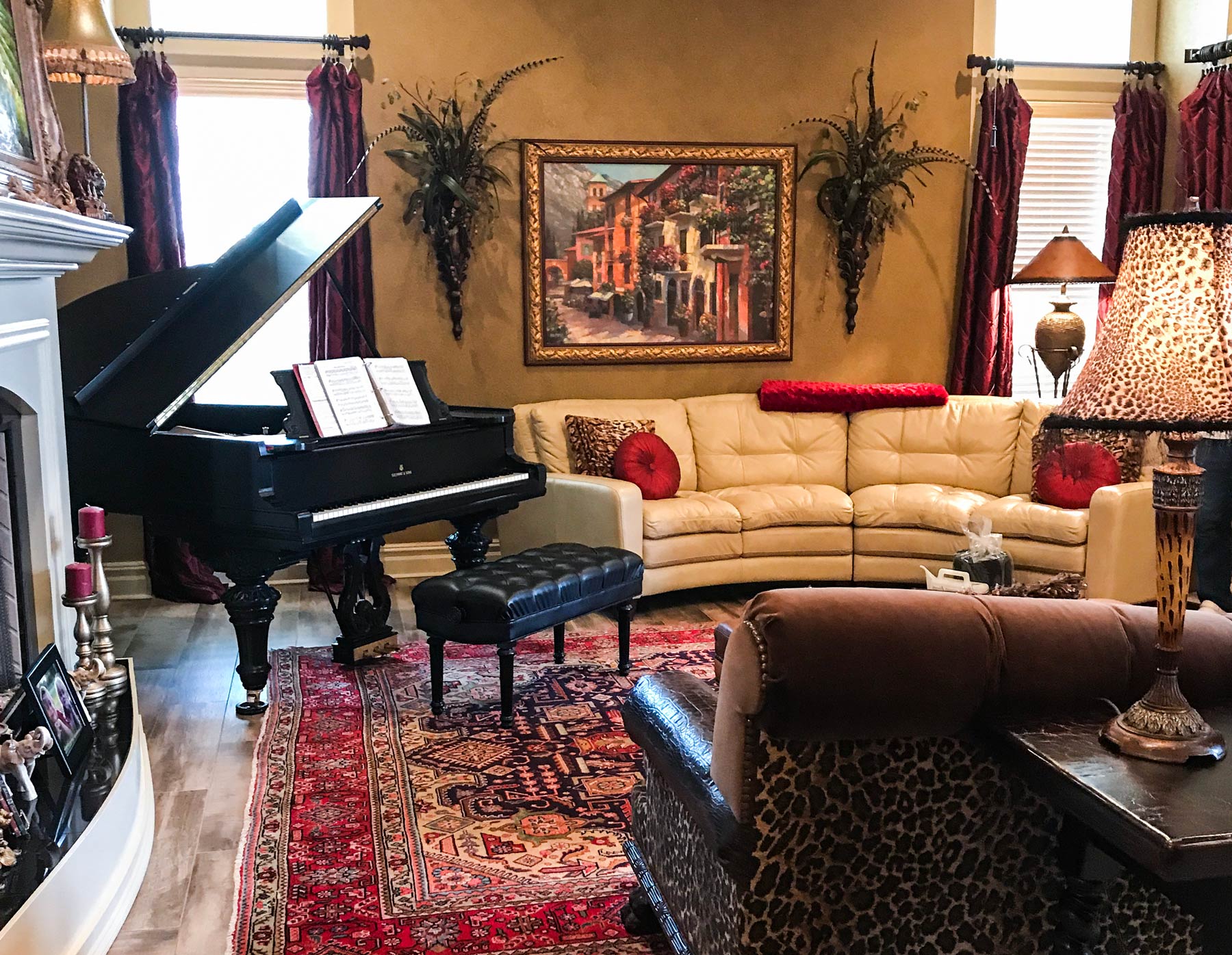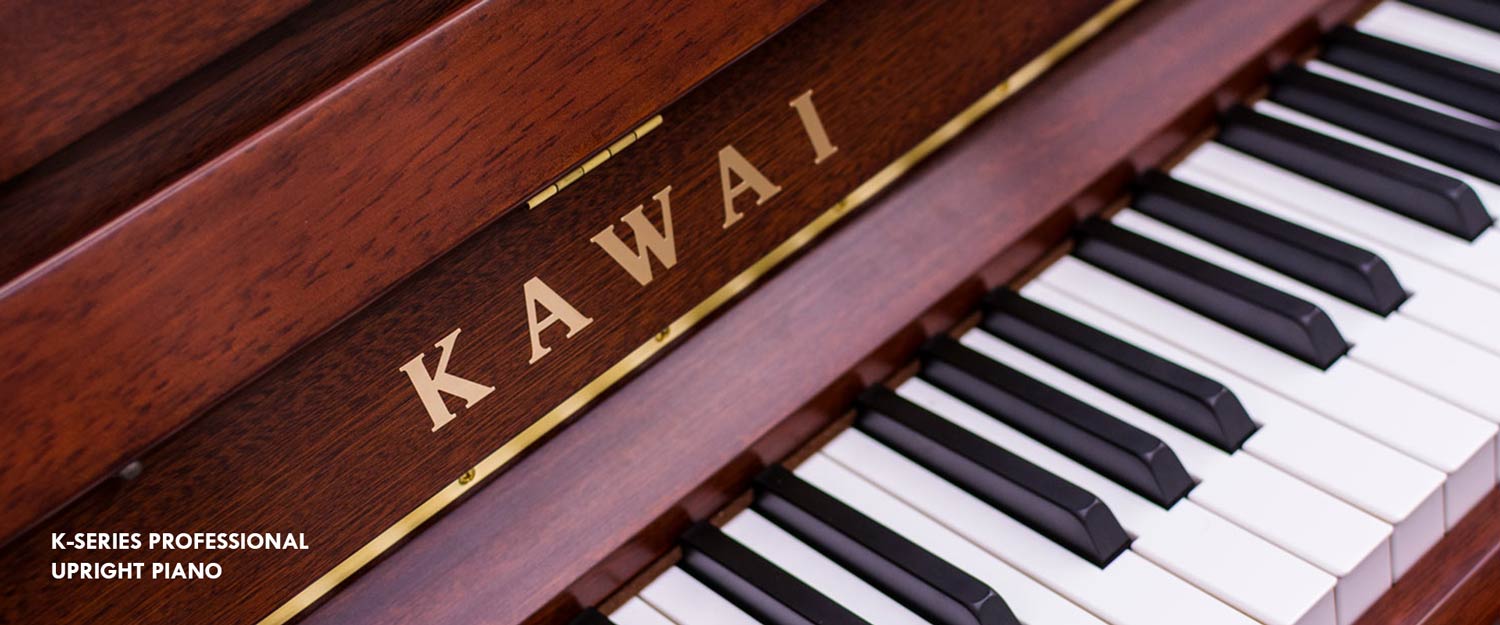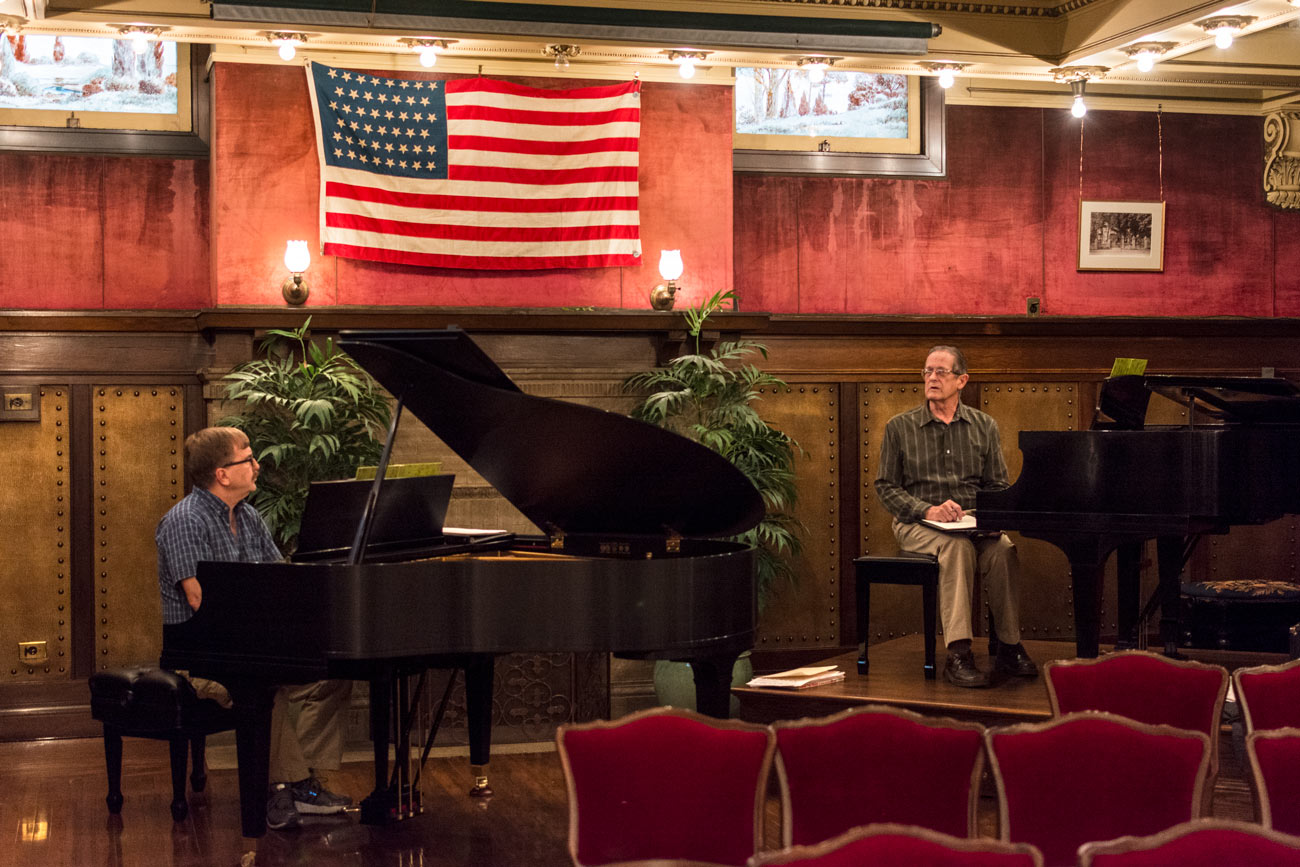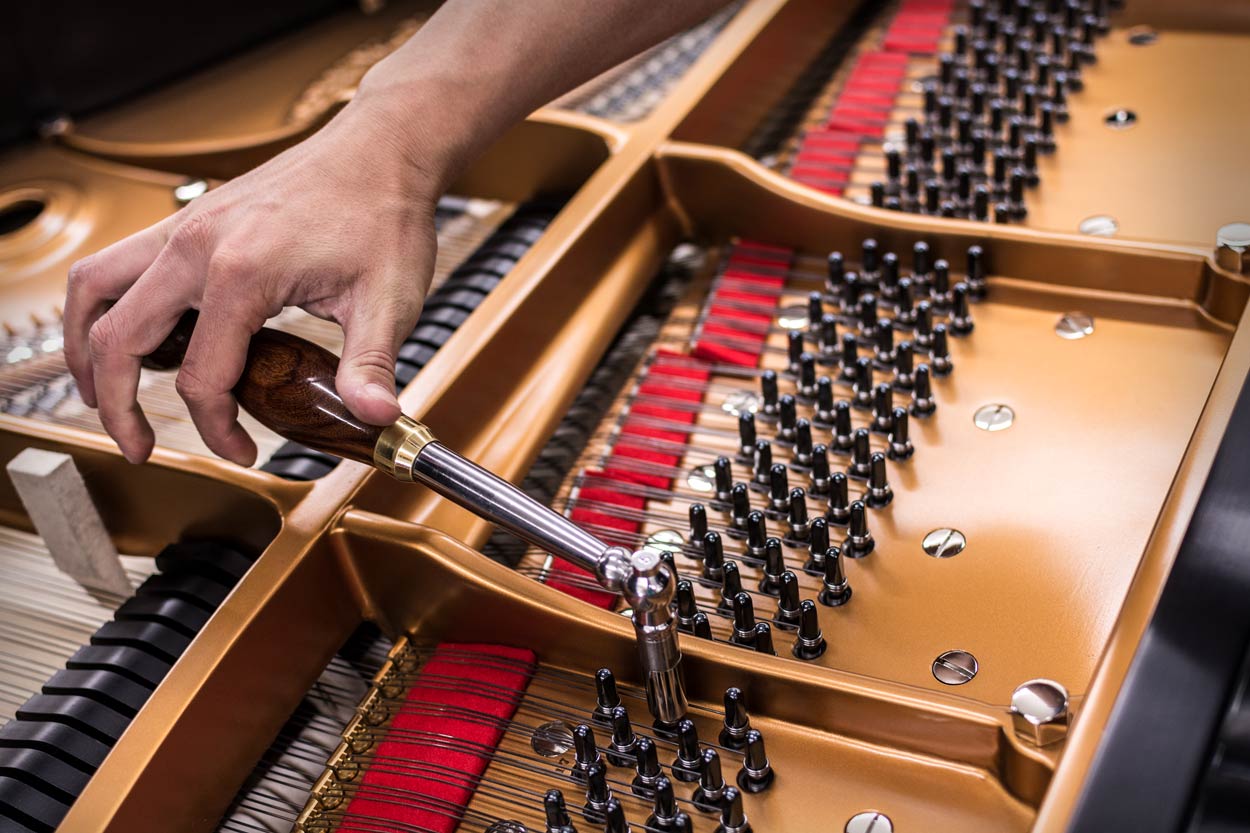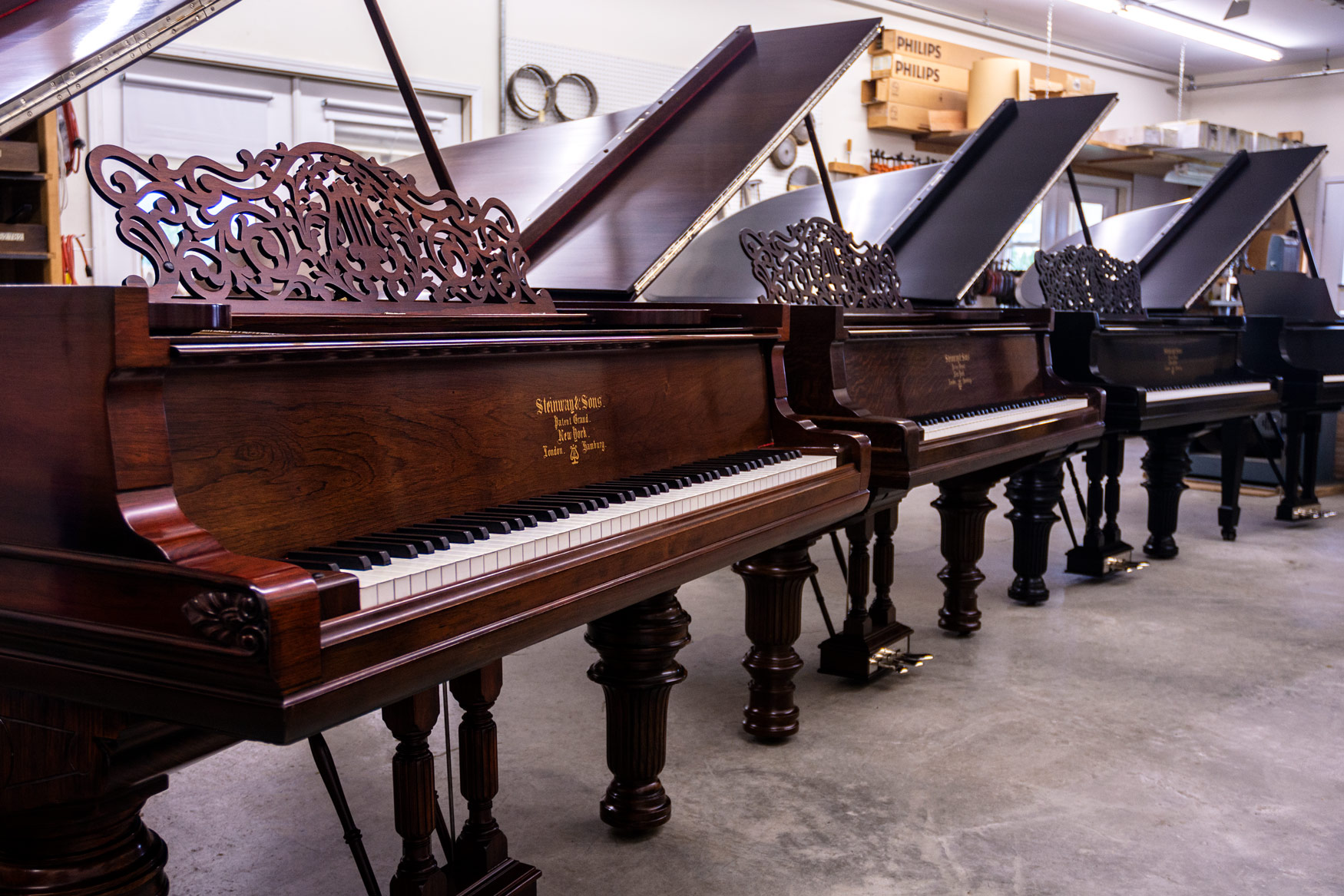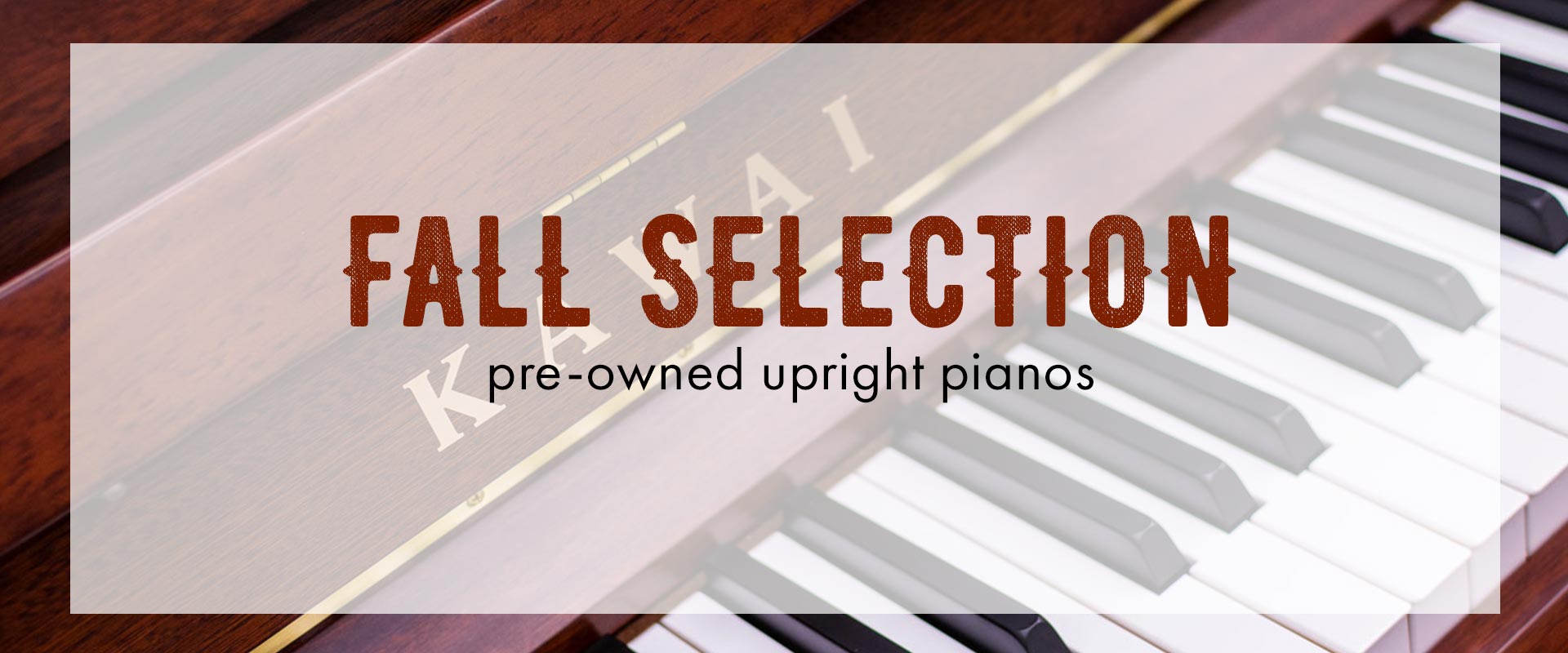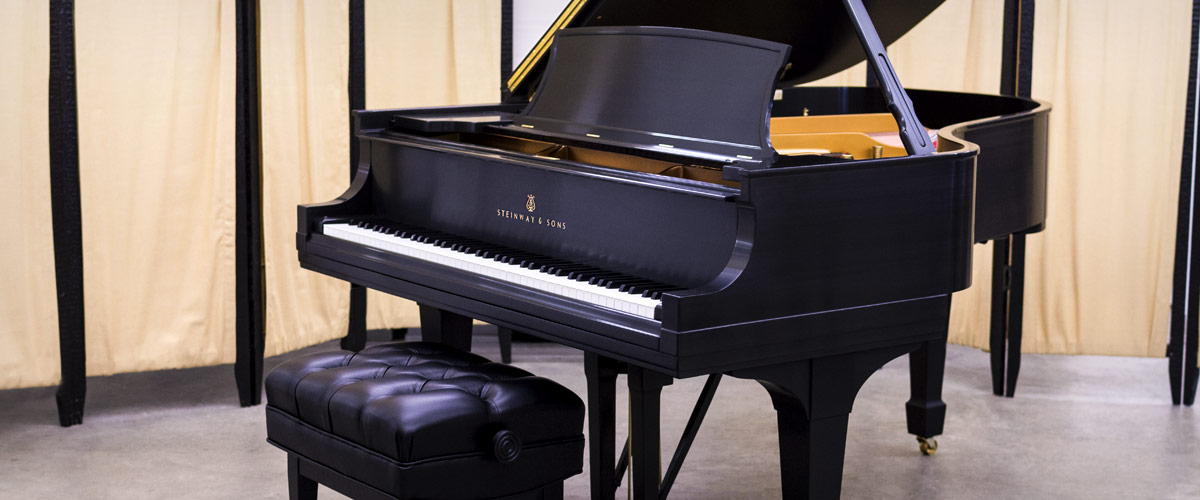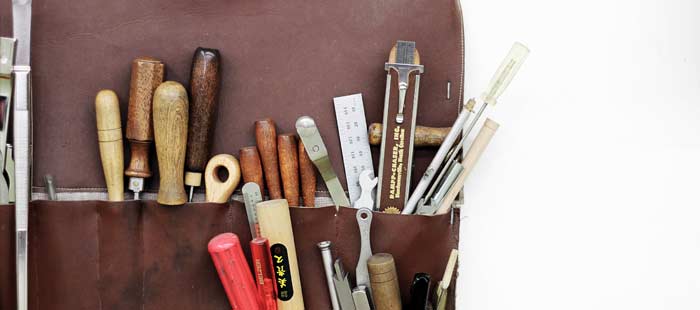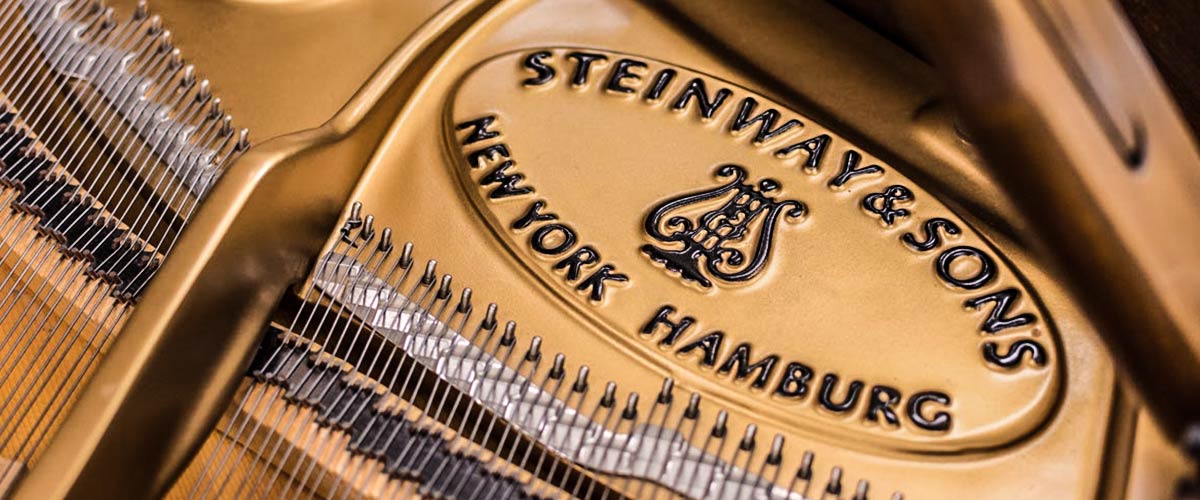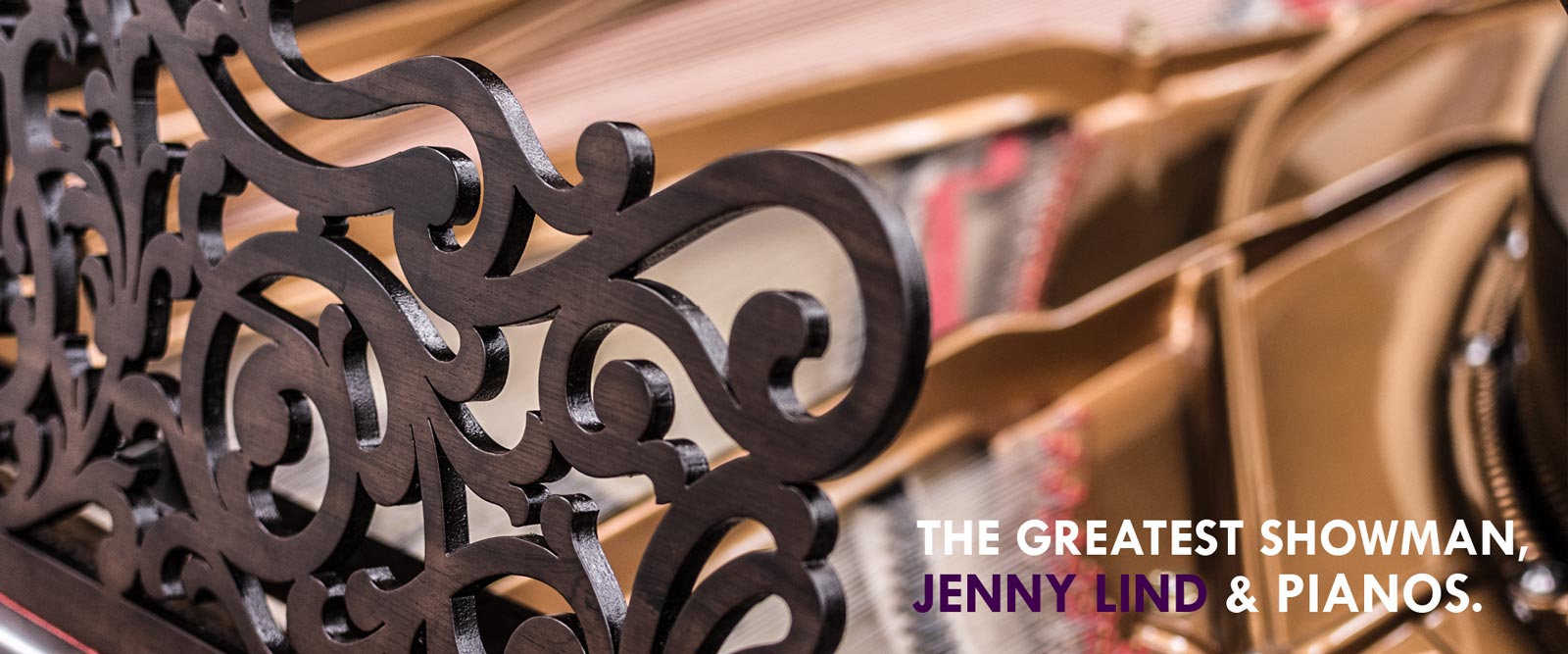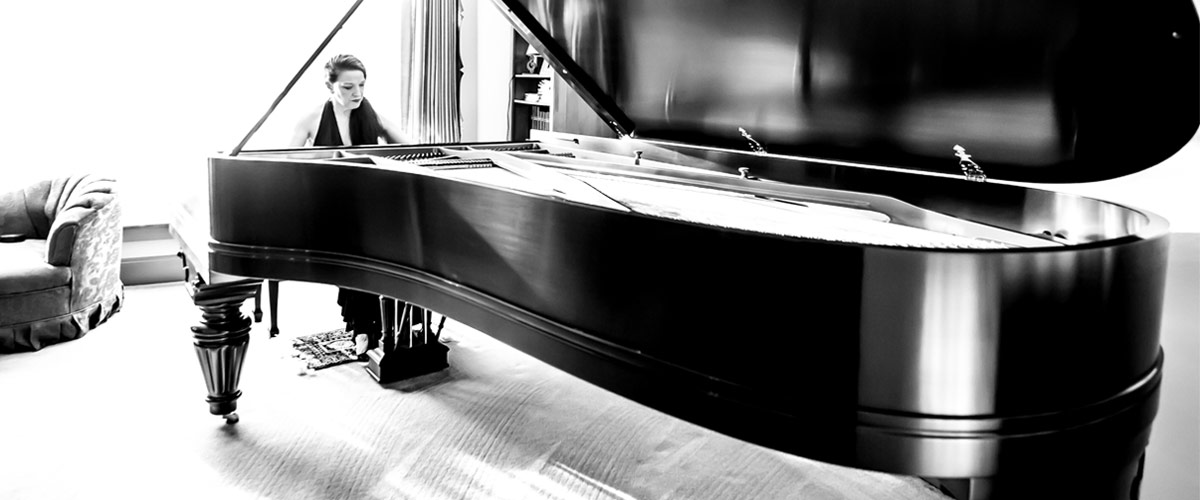“…work was first class – one of the finest restorations.” – Google Reviews of Chupp’s Piano Service
"We can’t believe what a beautiful instrument it is; exactly as represented"
Recommendations and reviews from our friends and clients is always a great encouragement. Read on to view two recent reviews left on our Google Business listing. Thank you to Franklin and Diana for your kind words!"We purchased our piano from Chupps in 2003 and it has been one of the best purchases we have ever made. We really had to save to buy and restore the Steinway B, but Dennis Chupp patiently helped us to find exactly what we were looking for and he restored it to perfection. The cost was less than what others had quoted us and the quality of Chupp's work was first-class. Our piano tuner (who is quite noted herself) said it is one of the finest restorations she has seen. She loves voicing and tuning our Steinway.
Steinway Piano Provided to Little Rock, AR Clients by Chupp’s Pianos
Little Rock, AR Clients on their Chupp's Piano Service Vintage Steinway Grand Piano
We were recently fortunate enough to be able to provide a beautiful vintage Steinway & Sons Grand Piano to Sam & Kim Vallery of Little Rock, Arkansas. They were kind enough to send in a testimonial about the piano they purchased from us along with some beautiful photos, which we have included below.
"What a delightful experience it was to come and see your pianos. We had scoured our area (Little Rock) in search of the perfect piano for me, but were left disappointed. We then hit the road. We ended up in Elkhart IN, visited several stores, and saved the best for last. Dennis gave me free rein to play whatever piano I wanted. No pressure, no time frame.
A ‘New’ Piano for the New Year – Used Upright Pianos for Sale
Pre-Owned Upright Pianos for Sale | Refurbished Pianos
2019 is underway! Whether your New Year's resolution has anything to do with music or not, we just might have the piano that is right for you. Along with our selection of rebuilt/restored grand pianos and new Kawai upright, grand and digital instruments, we also have a fine selection of pre-owned instruments at astounding prices. Here are just a few of them!The Baldwin: The Story of a Piano Restoration – Ruthmere Museum & Chupp’s Pianos
Partnering With The Ruthmere to Restore Local History
This historic Baldwin Model M Baby Grand Piano was fully rebuilt by Chupp’s Piano Service. Built in 1938 at the Cincinnati Baldwin piano factory, this grand piano was a family heirloom of the Deputy family, the last residents of the historic Ruthmere Mansion in Elkhart, Indiana. (In fact, one of their family portraits at the museum shows the family sitting around this very piano.) The piano is believed to have been moved out of the mansion in 1969. Recently, the Deputy family generously donated the Baldwin piano to the Ruthmere Museum, returning it to its former home. This is the story of a historic piano’s full restoration. Producer/Shooter/Director: Benjamin Rogers - Music Written & Performed by Philip Balke - Special thanks to The Ruthmere Museum of Elkhart, IN.Why Do Pianos Go Out of Tune?
Why Pianos Slip Out of Tune
A piano is made up of thousands of individual parts. A dizzying number of components constructed of wood, metal, and cloth all combine to create one musical instrument. In one way, all acoustic pianos are equal - they require tuning. Today, the standard pitch to which pianos are tuned is A440. Here are some of the reasons your piano will slip out of tune.Question: Why do pianos go out of tune? What has the greatest affect on my piano's tuning stability?
- Humidity Swings: The biggest factor that affects a piano's stability of tuning are swings in humidity. Traditionally, a piano's pinblock, soundboard and bridges are all made of wood. Wood can be very susceptible to swings in humidity which cause the wood to expand and contract. Constant swelling and shrinking combined with the thousands of pounds of tension created by the strings, causes the piano to quickly slip out of tune.
- Maintaining Consistency: A humidity range between 40% and 50% is optimal for your acoustic piano. The best solution is to maintain a constant humidity level in your home by using a whole house or room humidification control system. We also highly recommend the use of a Dampp Chaser Piano Life Saver System installed on the instrument to help create a stable 'microenvironment' around and inside the piano. These systems are available for both upright and grand pianos.
A Walk Down Memory Lane – Four Pianos, Years of History
Four Pianos, Hundreds of Years of History
We recently had several pianos lined up in our Rebuilding Facility that spanned the near entirety of what is considered the golden age of Steinway & Sons Factory quality. When we saw what we had set up, we couldn't help but snap some pictures to share! For lack of a better word, this was just plain cool! From the early days of modern piano building to the style of instrument most popular today, it's all represented! Here is some detail regarding these fine grand pianos.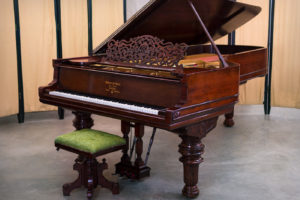 Steinway & Sons Model D #52626 was completed in early 1885. This means that construction of this piano began at the New York Steinway Factory in 1884. This is the first year that Steinway ever made what is now known as the king of concert grand pianos, the Model D! Veneered in a rich cut of rare Brazilian Rosewood and as one of the very first Model D Concert Grands ever built by Steinway, this piano marks the beginning of an era. It is a rare find indeed! The piano features a then typical round arm art case design with double narrow moldings around the case, a figured music desk with 'old-style' fretwork, hand-carved Victorian fluted flowerpot legs with hidden casters and a large box pedal lyre with carved pillars. This instrument was originally purchased for use at the DuPage County Library near Chicago, IL. This concert grand piano is currently located at our New Paris Rebuilding Facility and is available for selection and purchase.
[Click Here to Read More About This Piano.]
Steinway & Sons Model D #52626 was completed in early 1885. This means that construction of this piano began at the New York Steinway Factory in 1884. This is the first year that Steinway ever made what is now known as the king of concert grand pianos, the Model D! Veneered in a rich cut of rare Brazilian Rosewood and as one of the very first Model D Concert Grands ever built by Steinway, this piano marks the beginning of an era. It is a rare find indeed! The piano features a then typical round arm art case design with double narrow moldings around the case, a figured music desk with 'old-style' fretwork, hand-carved Victorian fluted flowerpot legs with hidden casters and a large box pedal lyre with carved pillars. This instrument was originally purchased for use at the DuPage County Library near Chicago, IL. This concert grand piano is currently located at our New Paris Rebuilding Facility and is available for selection and purchase.
[Click Here to Read More About This Piano.]
Inventory Update: Premium Used Upright Pianos
Quality Used Upright Pianos Available
Find The Piano For You in our Fall Selection!
The new school year is in full swing and many are starting back into music lessons as well. Now is the perfect time to consider the purchase of that upright piano you have been thinking about! We have assembled a selection of high quality, used upright pianos that run the gambit of budgets and tastes. Sitting alongside our selection of new upright pianos, these used instruments are all in excellent condition and come with a Three Year Warranty and free local ground floor delivery!Steinway Model O Fulfills Lifelong Piano Dream for Boston Couple
"One of my wife's lifelong dreams has been to own a Steinway piano, as her parents and grandparents did. Playing the piano has always been a huge part of my wife's family's life. Although not a musician myself, but one that can appreciate quality and fine art, I approached Dennis Chupp to help me with the purchase of a Steinway Model O for my wife's birthday. Dennis not only took the time to explain his experience and the business to me, but walked me through the intricacies of why a Steinway along with his restoration business is second to none. After much research and reference calls, we made the decision to proceed with a complete restoration of a 1921 Model O. This included having the finish changed from mahogany to ebony and a piano player system added.
How Much Does a Piano Weigh & Other Frequently Asked Questions
How much does a piano weigh?
The combination of thick pieces of lumber, the heavy cast iron plate (sometimes called a harp), and numerous other components make the piano one of the heaviest instruments on the market today. Pianos vary greatly in weight depending on their type and size. For example, a Steinway & Sons Model B which measures 6’11” in length weighs approx. 750 lbs. while smaller upright pianos such as consoles and spinets, usually weigh in the 300 to 500 lbs range.Music Major & Pianist Purchases Restored Mason & Hamlin Grand from Chupp’s Pianos
"I spent hours at the store deliberating between a few pianos and, after much deliberation, chose a rebuilt 1926 Mason & Hamlin."
Chupp’s Piano Service of New Paris, Indiana recently had the pleasure of working with Lorraine S. of Central Indiana. She was kind enough to provide the following testimonial regarding the restored Mason & Hamlin Model AA Grand Piano she purchased and her experience working with us.I recently inquired about a used piano that I saw on Chupp’s Pianos website. Dennis promptly replied and invited me to visit the showroom. I mentioned that I would be traveling near their showroom over a holiday weekend so he and his son, Tim, were kind enough to open the store on the holiday to accommodate my schedule (now that is customer service!). Tim was extremely patient as I spent hours at the store deliberating between a few pianos and, after much deliberation, chose a rebuilt 1926 Mason & Hamlin. Tim also gave me a tour of the piano restoration workshop, which I really enjoyed. As a former piano major, piano teacher, and church musician, I had not owned a piano for over five years since moving into my new home. Buying a grand piano is a major investment, so I had plenty of trepidation as to the cost, new versus used, and the brand after having searched online over a period of time. Overzealous salespeople are a real distraction to me, so I liked that Tim did not pressure me into buying anything, but instead let me browse and discuss at my leisure.
Quick Facts about the Steinway Model B | Infographic
The Steinway & Sons Model B - The World's "Perfect" Piano
For over 160 years, the name "Steinway" has represented the finest quality in the piano industry. Founded by Henry E. Steinway, the company quickly became a leader in both craftsmanship and innovation. One of the company's most legendary pianos is the 'seven-foot' Steinway Model B. This model of musical instrument is found in homes, institutions and performance venues around the world. View the infographic below to learn a bit more about this legendary piano. [Click the infographic to expand.]Illinois Pianist Provides Testimonial in Support of Chupp’s Piano Service
The Greatest Showman, Jenny Lind and Pianos
The Greatest Showman – The Piano Connection
The Greatest Showman hit theaters recently and with its solid box office numbers showed that the revival of the film musical is truly in force. Starring Hugh Jackman, this fictionalized musical focuses on the life of showman P.T. Barnum. The film is a great callback to classical films while still feeling current and ‘hip’. The film features a scene that although brief, has an interesting connection to the history of the piano industry.P.T. Barnum & Jenny Lind - An Overview
In 1850, P.T. Barnum arranged for Swedish singer Jenny Lind to tour the United States. A desire to appeal to a more highbrow audience and help ‘class up’ his reputation was key in his drive for his latest production. His reputation up to that point had been as someone who promoted more 'low brow' entertainment. Initially agreeing to $1,000.00 for each performance (plus expenses), Barnum also agreed to pay Lind up front for the tour. This was entirely based on her reputation in Europe, as he had never heard her sing. Lind later negotiated a high compensation package after discovering the immense scale and popularity of the cross-country tour. One of the greatest marketers and promoters of his day, Barnum made Jenny Lind into a household name before she ever arrived in North America. In fact, most Americans had no idea who she was prior to the start of his breathtakingly huge marketing campaign. When she arrived in New York, tens of thousands of spectators gathered at the port to greet her. Although Barnum and Lind amicably parted ways part way through the scheduled tour, it ended up being a great financial success for all involved. Lind was able to raise copious amounts of money for her various charities and she continued to tour North America under who own management. She would later marry her pianist, Otto Goldschmidt.VIDEO: “How Does a Moment Last Forever” on Steinway Model B #231416
"How Does a Moment Last Forever" Cover on Steinway B #231416
Piano Technician/Pianist Philip Balke performs 'How Does a Moment Last Forever' from the live action Disney film, 'Beauty & The Beast'. Written by Tim Rice and Alan Menken. Performed on restored Steinway & Sons Model B Grand Piano #231416. This piano originally built in 1925 during the height of the piano industry's golden age. Recorded at the Chupp's Piano Showroom in Goshen, Indiana, video production by Benjamin Rogers.Everett & Steinway Grand Pianos Restored for Indiana Pianist
Rare Grand Pianos Restored by Chupp's Piano Service for Carolyn Ripp
Chupp's Piano Service recently fully rebuilt two rare grand pianos for Carolyn Ripp, a pianist here in Indiana. The first piano we rebuilt for her was a stunning Steinway & Sons Model AR grand piano in an African Flame Mahogany cabinet. This piano was originally a player instrument, built around the legendary Steinway A-3 scale design. The second was a powerful Everett 9' Concert Grand Piano. An incredibly rare instrument, this 9' concert grand boasts an incredible quality of tone and touch. Built during the company's early days in Boston, this is one of only a handful of these pianos still in existence. Carolyn was kind enough to send in the following letter of recommendation regarding our piano restoration work.
Dear Dennis and the Entire Chupp’s Team, I am seriously failing for words to describe the beauty of the two pianos you restored for me. The Steinway came first and its remarkable restoration was breathtaking. Then the unusual Everett came and we could hardly believe the volume of sound that it produces. Now I am enjoying picking the piano that will render the music at it’s finest. Every key plays perfectly, every sound is rich. Now that both are together again, I appreciate these instruments more than ever before. I always knew they were both special, but to play them now, it is just a decadent experience. Even my tuner said that when he presses a key to tune, that it is so beautiful, he feels like he is “playing” these pianos and enjoys every sound! It really shows how much your staff really appreciates and cares for the pianos that come their way. Every step of the process of achieving this remarkable result has only added to the whole, wonderful experience. BRAVO!! I have played many fine instruments of rare value, but I couldn’t want anything more. This IS the most exciting time of my life. Thank you!


